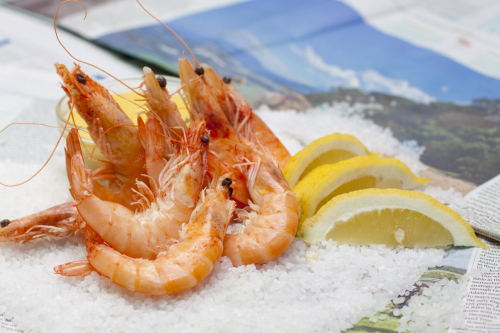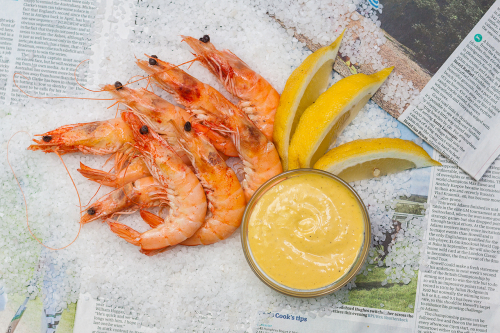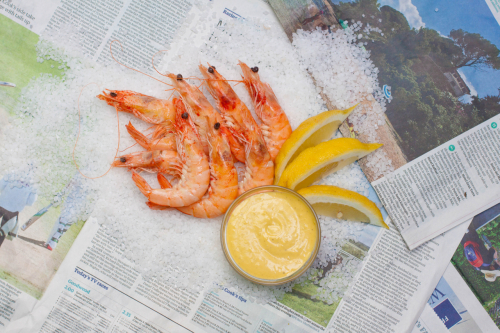Borough Market Blog, Sydney prawns and Dad's "benchmark" aioli
 Wednesday, September 9, 2015 at 9:43PM
Wednesday, September 9, 2015 at 9:43PM 
I’ve just started a series of guest posts for the Borough Market Blog. Check out the first post here. In the series I will be touching on some of the themes I have covered on my food anthropology page on food and identity. I’m interested in the special significance that people attach to the foods that they grew up with and the role this plays in defining who we are.
Over the coming months I will be speaking to seven traders from different ethnic backgrounds about the foods that are important to them and why. For the first post, I decided to ask myself the same questions I will be asking the traders. What are the foods that remind me of home? What foods make me feel nostalgic? What foods evoke special memories for me?
One thing I miss most about Sydney (my other home) is the seafood. In London, the best quality seafood is to be found at Billingsgate, which is very much geared towards the wholesale market. If you want to buy fish from there you have to get up at sparrows fart and trek out to Poplar (far for me). The Sydney Fish Market, on the other hand, is centrally located and aimed at both retail and wholesale customers.
I miss the freshness and diversity of the seafood on offer at the Sydney Fish Market. I can think of so many delicious things, but if I had to pick just one it would be the king prawns. My friends and I buy them cooked and serve them cold with a squeeze of lemon and/or a simple dipping sauce. That’s all they need.
I think the thing that gives the Sydney prawns their special flavour is that they are cooked live in saltwater at sea. I tried to recreate this for the Borough Market blog by cooking them in heavily salted water. It's the closest I’ve come to the real thing over here.
In my household cold prawns are always served with my Dad’s "benchmark" aioli. My friend Dash gave it this name, as neither of us has tried a better one. This was not so easy to replicate. I think the key is the amount of garlic – obscene – and a mixture of both roasted and raw. However, I am sure there is still something Dad isn’t telling me!
Serves 4 as a starter or snack

Ingredients
For the prawns
3L water
100g salt
1kg whole raw king prawns in their shell
For the aioli
1 bulb garlic
1 egg yolk
100ml vegetable oil
1 tsp Dijon mustard, or to taste
1 tsp lemon juice, or to taste
Salt and freshly ground black pepper, to taste
Method
Preheat the oven at 180C.
Bring the water to the boil in a large saucepan and dissolve the salt in it. Add the prawns and cook for a few minutes or until they start to float to the top of the water. Put in the fridge to chill.
Remove one small clove of garlic from the bulb and put the rest in the oven. Roast for approximately 20 minutes until the skin is brown and the cloves are tender. Remove and leave to cool. Finely chop the small clove of raw garlic.
Meanwhile, whisk the egg yolk in a bowl and very, very slowly add small drizzles of oil. Don’t add any more until the last small drizzle is incorporated. It is best to let it drizzle down the side of the bowl so it enters the yolk more slowly. Once it starts to thicken you can start adding a little more oil, but don’t be tempted to add too much; you may still split it.
Once you have added all the oil, stir in the Dijon and lemon juice. Squeeze the roasted garlic out of its skin, discard the skin and mash the flesh with a fork. Add to the mayonnaise along with the raw garlic and stir to combine. Season with salt and pepper, to taste.
Serve the prawns whole in their shell with aioli to dip. A finger bowl with water and lemon and an empty bowl for shells is a good idea.

 Vix |
Vix |  Post a Comment |
Post a Comment | 
Reader Comments